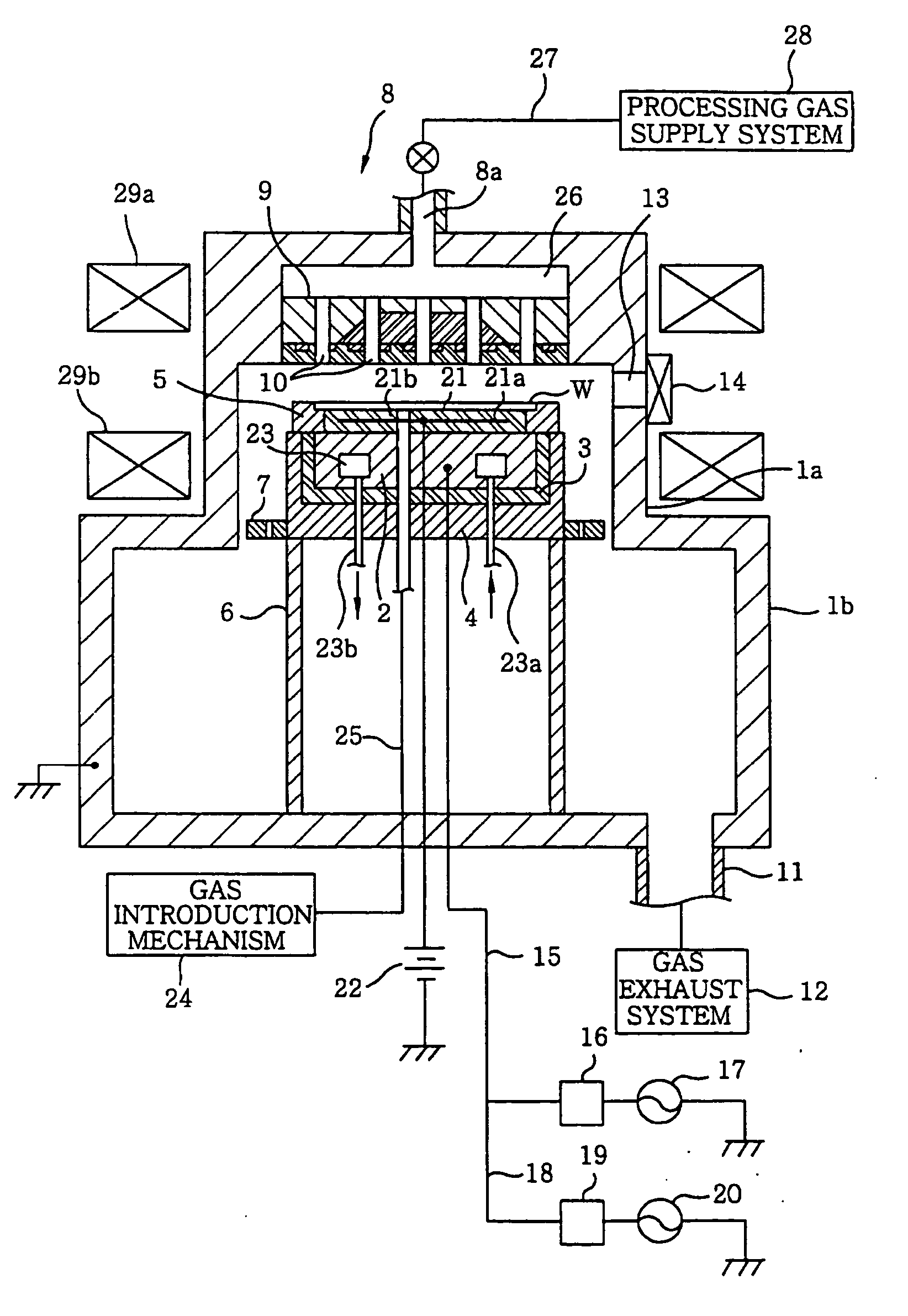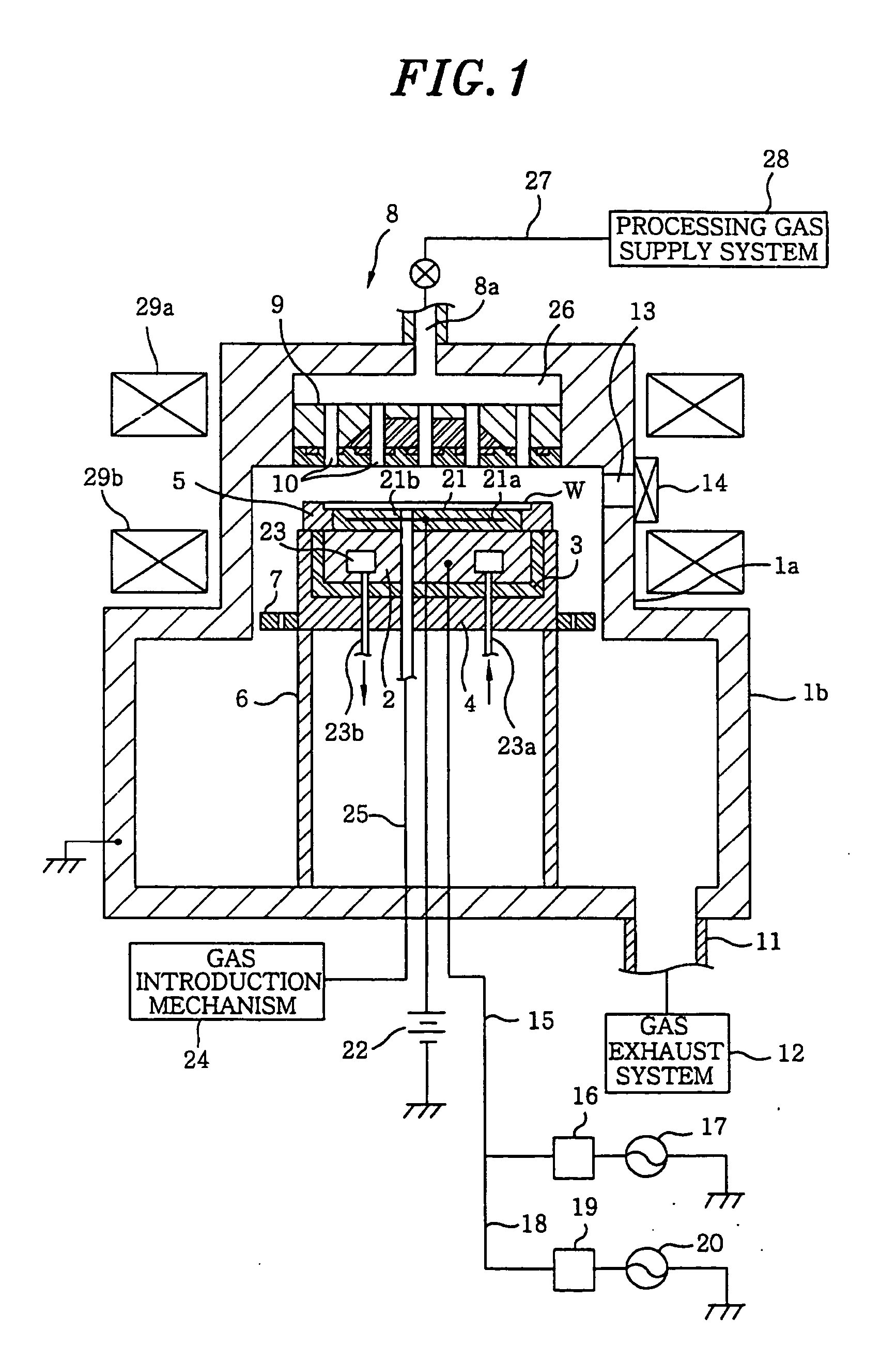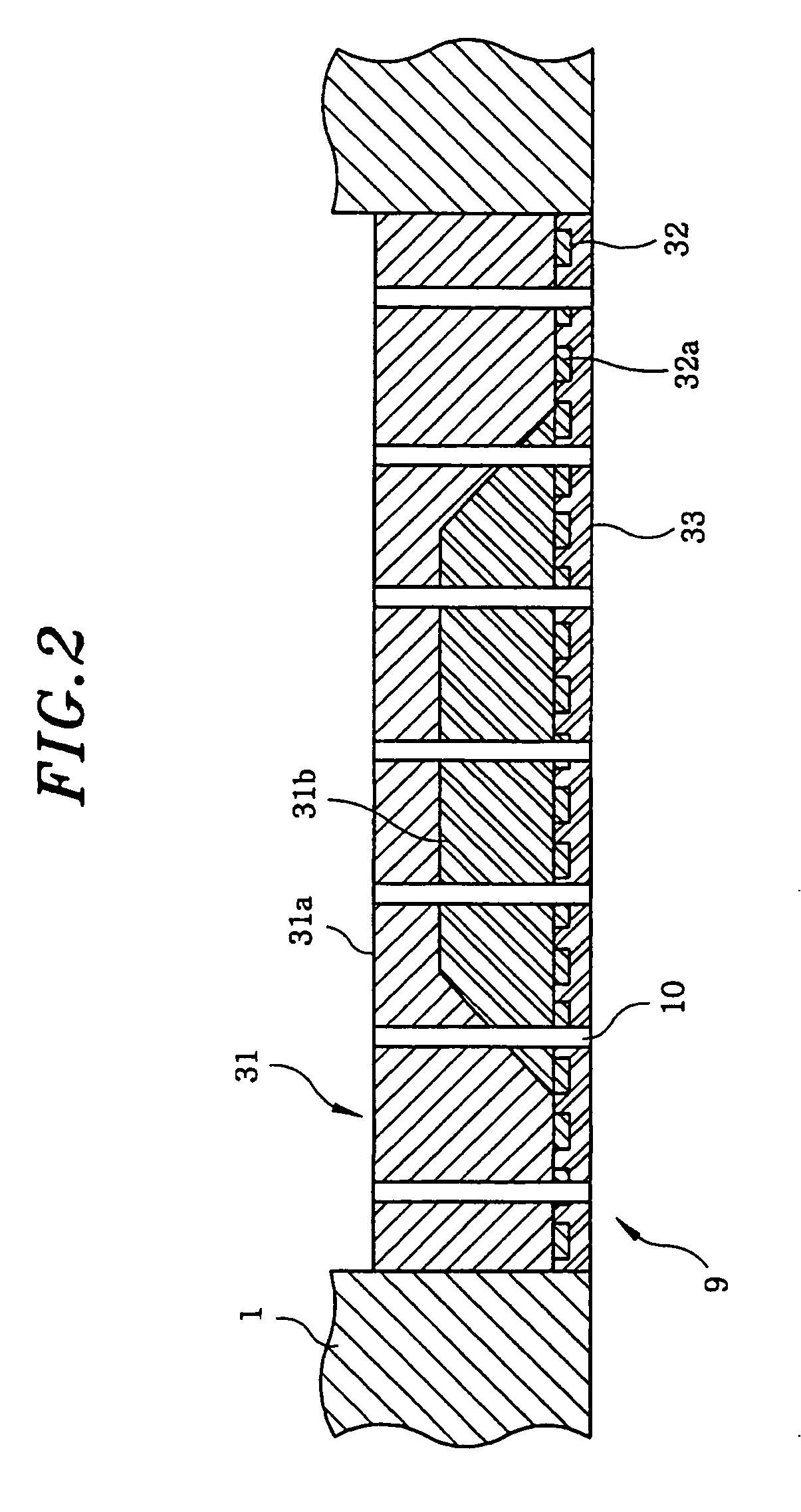Thermally sprayed member, electrode and plasma processing apparatus using the electrode
a technology of electrodes and plasma, applied in the direction of superimposed coating processes, plasma techniques, coatings, etc., can solve the problems of dielectric members, non-uniform plasma density, and deterioration of the anchoring effect of thermally sprayed films, and achieve the effect of high frequency power
- Summary
- Abstract
- Description
- Claims
- Application Information
AI Technical Summary
Benefits of technology
Problems solved by technology
Method used
Image
Examples
Embodiment Construction
[0028] Hereinafter, preferred embodiments of the present invention will be described in detail with reference to the accompanying drawings.
[0029]FIG. 1 shows a cross-sectional view illustrating an RIE plasma etching apparatus employing an electrode in accordance with a first preferred embodiment of the present invention as the upper electrode. Such etching apparatus includes a chamber (processing vessel) 1 with wall portions made of, e.g., aluminum, the chamber being sealed airtight and having a stepped cylindrical shape composed of an upper portion 1a of a smaller diameter and a lower portion 1b of a larger diameter.
[0030] Installed in the chamber 1 is a supporting table 2 horizontally supporting a semiconductor wafer W made of Si or the like as an object to be processed and also serving as a lower electrode. The supporting table 2 is made of, e.g., aluminum, and supported at a conductive support 4 via an insulating plate 3. Further, installed around the upper periphery of the in...
PUM
| Property | Measurement | Unit |
|---|---|---|
| Depth | aaaaa | aaaaa |
| Strength | aaaaa | aaaaa |
Abstract
Description
Claims
Application Information
 Login to View More
Login to View More - R&D
- Intellectual Property
- Life Sciences
- Materials
- Tech Scout
- Unparalleled Data Quality
- Higher Quality Content
- 60% Fewer Hallucinations
Browse by: Latest US Patents, China's latest patents, Technical Efficacy Thesaurus, Application Domain, Technology Topic, Popular Technical Reports.
© 2025 PatSnap. All rights reserved.Legal|Privacy policy|Modern Slavery Act Transparency Statement|Sitemap|About US| Contact US: help@patsnap.com



